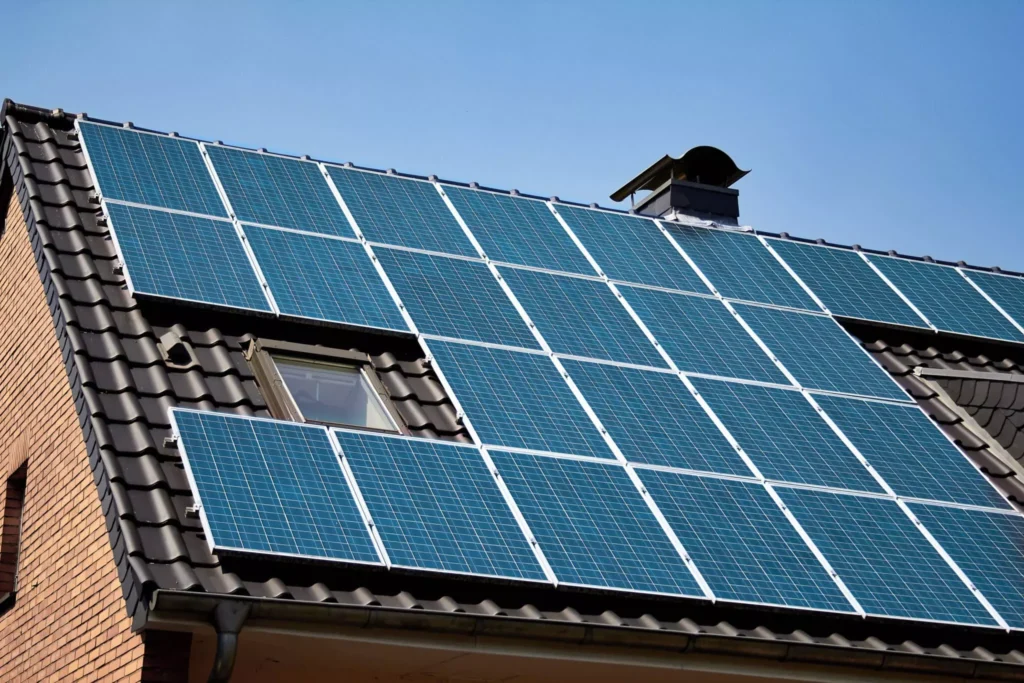Going solar is one of the smartest moves a homeowner can make today. It lowers electricity bills. It reduces carbon footprint. It also increases property value. But many homeowners make avoidable mistakes when installing rooftop solar systems. These mistakes can reduce power output, waste money, and create long-term problems.
This detailed guide explains the most common mistakes people make in India while going solar. It also shares practical solutions to help you save money, improve solar performance, and enjoy uninterrupted green energy for decades.
Why Avoiding Mistakes in Solar Installation is Important

Solar panels last 20–30 years. A small mistake during installation can affect energy output for decades. Careful planning ensures better system efficiency, higher return on investment (ROI), and smooth government subsidy approvals.
Mistake 1 — Wrong System Sizing
Many homeowners buy a “5 kW” or “10 kW” solar system just because it sounds right or fits their budget.
Why it’s wrong:
- Electricity bills are measured in kilowatt-hours (kWh), not kilowatts (kW).
- Oversizing wastes money, while undersizing fails to meet household needs.
Solution:
- Collect at least 12 months of electricity bills.
- Calculate your average daily kWh usage.
- Use local sunlight hours (4–6 hours/day in most Indian cities) to size your rooftop solar system.
- Factor in real-world losses like dust, wiring, and temperature (typically 20–30%).
Relevant keywords: Solar system sizing India, rooftop solar capacity, solar energy calculation.
Also Read Solar Panel Cleaning: Dos and Don’ts for Maximum Efficiency
Mistake 2 — Ignoring Roof Condition
Installing solar on a weak or damaged roof leads to future headaches.
Why it’s wrong:
- Panels must be removed if you repair or replace the roof later.
- This increases costs.
Solution:
- Inspect your roof for leaks, cracks, and strength.
- Repair before installation.
- Ensure proper mounting structures and corrosion-resistant fasteners.
Relevant keywords: rooftop solar installation India, roof inspection for solar, solar panel mounting.
Mistake 3 — Buying Cheap Equipment
Low-cost panels and inverters may save money upfront but cost more in the long run.
Why it’s wrong:
- Cheaper panels degrade faster.
- Inverters may fail within 5–7 years.
- Poor-quality products may not qualify for government subsidies.
Solution:
- Choose solar panels approved under ALMM (Approved List of Models and Manufacturers).
- Check BIS certification.
- Ask for at least 25-year performance warranty on panels and 5–10 years on inverters.
Relevant keywords: best solar panels in India, ALMM-approved solar, BIS-certified solar panels.
Mistake 4 — Skipping Subsidy and Paperwork
Many homeowners don’t apply for solar subsidies due to paperwork confusion.
Why it’s wrong:
- You lose thousands in government support.
- Incorrect paperwork delays approvals and net metering.
Solution:
- Apply through the national rooftop portal under PM Surya Ghar Yojana.
- Use only approved vendors and products.
- Keep invoices, commissioning reports, and photos for subsidy claims.
Relevant keywords: solar subsidy India 2025, PM Surya Ghar scheme, rooftop solar subsidy process.
Mistake 5 — Not Understanding Net Metering
Net metering rules differ in every state.
Why it’s wrong:
- Some states allow monthly credit carry forward, others don’t.
- Exported energy may be settled at lower tariffs.
Solution:
- Check your DISCOM’s net metering policy before installing solar.
- Size your system based on sanctioned load and state rules.
Relevant keywords: net metering in India, solar export credits, DISCOM solar policy.
Mistake 6 — Wrong Inverter Selection
The inverter is the heart of your solar system.
Why it’s wrong:
- Incorrect DC:AC ratio wastes solar generation.
- Some inverters don’t support battery backup.
Solution:
- Use an inverter with multiple MPPTs for different roof directions.
- Choose hybrid inverters if you plan to add batteries.
- Maintain a DC:AC ratio of around 1.1–1.3.
Relevant keywords: best solar inverter India, hybrid inverter, DC:AC ratio solar.
Mistake 7 — Poor Layout and Shading Issues
Even a small shadow can affect entire solar strings.
Why it’s wrong:
- Shading reduces efficiency across connected panels.
- Poor stringing increases mismatch losses.
Solution:
- Conduct a shading analysis for different seasons.
- Use optimizers or microinverters if shade is unavoidable.
Relevant keywords: solar panel layout, shading analysis solar, microinverters India.
Mistake 8 — Ignoring Maintenance
Many homeowners assume solar panels are maintenance-free.
Why it’s wrong:
- Dust, bird droppings, and pollution reduce generation by 10–20%.
- Loose cables can cause safety hazards.
Solution:
- Clean panels every 2–4 weeks depending on pollution levels.
- Inspect wiring, fasteners, and inverters twice a year.
Relevant keywords: solar panel cleaning India, solar maintenance, DIY solar cleaning.
Mistake 9 — Weak Warranties and Service
Not checking warranty terms creates problems later.
Why it’s wrong:
- Many companies give only verbal promises.
- Claims may be denied without proper documentation.
Solution:
- Demand written warranties for panels, inverters, and installation.
- Keep commissioning reports, serial numbers, and invoices.
- Prefer installers with local service centers.
Relevant keywords: solar panel warranty India, inverter warranty, solar service contract.
Mistake 10 — Overestimating Batteries
Homeowners often expect batteries to give 24/7 power backup.
Why it’s wrong:
- Batteries are costly and have limited life (6–10 years).
- Wrong sizing leads to poor backup performance.
Solution:
- Decide if you need batteries for backup, savings, or off-grid use.
- Choose lithium batteries for longer life.
- Start with grid-tied and add batteries later if needed.
Relevant keywords: solar battery backup India, lithium battery for solar, off-grid solar India.
Mistake 11 — Hiring the Wrong Installer
Choosing the cheapest installer leads to poor workmanship.
Why it’s wrong:
- Faulty wiring causes system failure.
- Lack of proper documentation makes subsidy claims hard.
Solution:
- Check previous projects and customer feedback.
- Demand detailed designs and single-line diagrams.
- Ensure installers provide after-sales support.
Relevant keywords: best solar installer India, rooftop solar EPC, solar installation quality.
Mistake 12 — Not Using Monitoring Systems
Without monitoring, you won’t know if your system is underperforming.
Why it’s wrong:
- Hidden faults reduce energy generation.
- Small problems go unnoticed for months.
Solution:
- Use inverters with mobile apps or online dashboards.
- Monitor daily and monthly kWh output.
- Set alerts for low production.
Relevant keywords: solar monitoring India, inverter app, solar performance tracking.
Final Thoughts
Going solar is an excellent decision for Indian homeowners. But it must be done carefully. Avoiding these 12 mistakes ensures your solar system gives maximum power output, reduces electricity bills, and pays back faster. Always check product certifications, state net metering rules, and installer reputation before signing any contract.
Author- Ayush
FAQs
Q1. How many panels are needed for a 3BHK home in India?
Most 3BHK homes with 400–500 units per month need a 3–5 kW solar system, which is around 8–12 panels depending on wattage.
Q2. Should I apply for the PM Surya Ghar subsidy?
Yes. If eligible, subsidies can cover up to 40% of the system cost for smaller systems. Always apply through the official government portal.
Q3. How long do solar inverters last?
Most inverters last 8–12 years. Plan for at least one replacement during the system’s lifetime.
Q4. Do solar panels work during power cuts?
Grid-tied solar panels shut down during power cuts unless you have a battery backup or hybrid inverter.
Q5. How often should I clean my solar panels in India?
In urban and dusty areas, clean every 2–4 weeks. In rural or less polluted regions, every 6–8 weeks may be enough.










